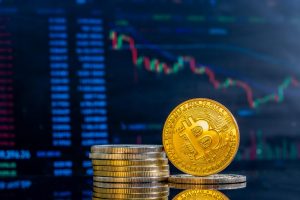INTRODUCTION
Liquidity is a market attribute that allows us to determine if we can purchase or sell an asset fast and easily inside that market.
One of the most important and basic concepts within the markets is that of liquidity. This concept tells us the extent to which any asset can be bought or sold at a certain price. The liquidity of a market allows us to recognize whether an asset can be bought or sold easily within a market, given the existence and need to operate with said asset. With this in mind, it’s easy to see why “liquid” or “very liquid” markets have more dynamism and make it easier for parties to participate than “illiquid” or “illiquid” markets.
However, you will surely ask yourself, what impact does liquidity really have on the markets? How can liquidity affect the price of an asset? Well, these and other questions you can meet below.
LIQUIDITY, A FUNDAMENTAL PIECE OF THE MARKETS
As we have already mentioned, liquidity tells us whether an asset can be bought or sold quickly within a market, since this asset is actively traded in large quantities within it.
A liquid market is a healthy market. It is so important that many cryptocurrency exchanges buy the services of companies called market makers in order to generate order books liquids, in addition to exchange volume if requested.
This means that liquidity is linked to concepts such as those of offer and demand. In this sense, the offer is the amount of a given asset that is available to trade. While demand, it is the need for traders to transform other assets into the target asset that is being offered.
If a market does not have enough liquidity, changes between assets become very difficult and even impossible to carry out in many altcoins. But this is only one facet of liquidity, as it can affect the final price of the assets in question.
For example, in a liquid market, the rapid purchases and sales of assets indicate that we can transform our assets with little loss due to changes in the price of these assets. This is vital in markets such as cryptocurrencies, where the price of assets such as Bitcoin can vary greatly in a few minutes. The opposite happens in a market that is not liquid, where our exchange operations can take hours or days to carry out, with the corresponding risk of a price drop that makes us lose money in the process.
A dynamic market or one with a high volume of trade have nothing in common with a liquid market. For example, an exchange could simulate exchange orders every 10 seconds of € 1000. If done 10,000 times a day, they will have a daily volume of 10 million euros, with a market where it operates every 10 seconds, but the market will not be liquid, since it is an artificial market with a “market making” strategy. .
To determine how liquid a market is, just look at the order book and see what happens to the asset’s price if you place a certain order. For example: sell € 100.000 in the BTC-EUR pair on a certain exchange. If given the sell order, you notice that the price of BTC changes a lot, then it is not liquid. It may even be that your operation is never carried out in its entirety, because there is not the amount of exchange asset necessary to complete the operation.
CLASSIFICATION OF ASSETS ACCORDING TO THEIR LIQUIDITY
We can classify financial assets according to their liquidity:
- Fiat money: Fiat money is by far the liquid asset par excellence. The reason is that fiat money can be exchanged for any other asset quickly without the risk of significant losses in value. Of course, different forms and representations of fiat money come in at this point, for example:
- Bank deposits.
- Short and long-term debt issues.
- Notes or assets issued by a company.
- Equities of companies or shares.
- Commodities such as metals (iron, bauxite, copper), precious metals (gold, silver), oil, gas, grains, meats.
- Currency markets, including stock indices and ETFs.
- Cryptocurrencies.
At this point, we’re interested in the cryptocurrency market, which, although being listed as the fourth most liquid asset on this list, is actually far larger and more liquid than many stock markets and stock indices throughout the world. This due to the enormous economic growth that cryptocurrencies have suffered since their appearance. An evolution and growth that even today continues to increase rapidly.
IMPACT OF LIQUIDITY ON MARKETS
Market liquidity is crucial since it serves to set the pace of the transactions that take place there. Exchange activities are opened and closed very fast in a highly liquid or liquid market, as we have already discussed. In a low liquidity or illiquid market, the exact reverse occurs. This, of course, implies that the risk of operations in liquid markets is smaller than in illiquid markets.
However, if you have been in the crypto world for some time, you have surely heard that the great liquidity of certain cryptocurrency markets attracts speculators and a well-known practice as pump and dump. This is true, and it is something to be quite careful about. But let’s explain first what is pump and dump, and then you can understand the danger. First of all, the pump and dump is a strategy that seeks to increase the price of a cryptocurrency artificially. In this way, speculators seek to multiply the profits they can make by raising the price of a cryptocurrency.
The objective is to drive the price of the currency up to a point, and then flood the market by selling all its positions. This allows them to generate a large supply of coins with a price slightly lower than the market, but that gives them great returns. Outcome? Speculators make a lot of money, while those who participate in the system with few holdings and very late lose it. That is to say, this is only possible in markets with good liquidity, because they facilitate the exchange quickly. You may see this as a negative and undesirable point. But the truth is that it also has its advantages, since more people enter the system and generally the decline ends up positioning the price in a range higher than the initial mark of the pump and dump. In addition, liquidity will also increase and in general the dynamism of the market will be greater.
Photo by engin akyurt
Read Next: Learn about business in Metaverse




